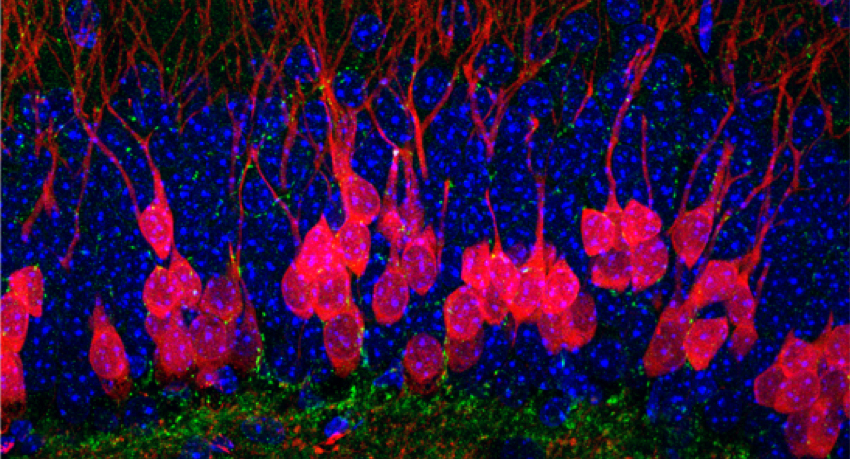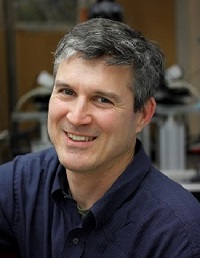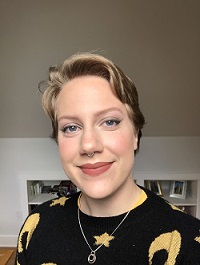Schnell Lab

Research interests
Our current research focuses on how synapses are formed in the brain by adult born neurons, how these neurons contribute to neuronal circuit function, and how they contribute to recovery or the development of neurologic disease after neurologic injury. Newly generated neurons must be integrated into existing neuronal circuits to contribute to information processing, and alterations in this process could have profound clinical implications. Our current focus is on understanding how adult-born neurons might contribute to the pathogenesis of post-traumatic epilepsy, and we have developed techniques to analyze synaptic transmission at synapses formed by these adult-born cells and to evaluate the behavioral consequences of activity in these adult-born neurons. Our scientific expertise lies in the study of neuronal structure and synaptic function, using electrophysiology, molecular biology, translational models and immunohistochemical/anatomical imaging techniques.
Ongoing projects
By combining optogenetics and transgenic labeling techniques, several projects in the lab examine hippocampal circuit plasticity and rewiring during the development of epilepsy. In one recent study, we found that adult-born neurons contribute to the formation of recurrent circuits, which might contribute to hippocampal hyperexcitability in epilepsy. Our hope is to not only describe how specific neuronal circuit elements are altered during epileptogenesis, but also to determine whether these changes contribute to, or help ameliorate, hippocampal hyperexcitability.
Although the brain has some capacity for regeneration after injury through the enhancement of adult neurogenesis, we have discovered that neurons born into an injured brain develop aberrantly and may contribute to circuit dysfunction. Ongoing studies suggest that anesthetic drugs might modulate this aberrant neurogenesis, and might have therapeutic benefits if administered early after injury. We are combining imaging, electrophysiology, and behavioral assays with translational models of brain injury to evaluate both mechanisms and potential treatments for post-traumatic neural circuit dysfunction.
The alpha-2 delta protein family plays a role in neuronal Ca++ channel function, synaptic transmission, and synaptogenesis. We are interested in how these various roles interact during neuronal development and, and are engaged in both in vivo and in vitro studies of the fascinating protein family
Our people

Eric began his research career in Michael Hasselmo’s laboratory at Harvard, studying the cholinergic modulation of synaptic transmission. He then obtained his Ph.D. in Roger Nicoll’s lab at UCSF, and helped establish the role of PSD95 in synapse formation and AMPA receptor trafficking to synapses. He arrived at the Portland VA/OHSU in 2008, and began his faculty career with mentorship from Gary Westbrook at the Vollum Institute, studying the mechanisms underlying the maturation and synaptic integration of adult-born granule cells. He has since established his own lab, but maintains a close collaboration with Gary on a number of ongoing projects. Outside of the lab, Eric is an avid bike commuter and loves spending time on the water, either liquid or frozen.

Alyssa was born and raised in Vancouver, WA. and is a first generation college student. She graduated in 2020 with a B.S in Neuroscience with an emphasis in cognitive behavior from University of Montana. Alyssa stayed in Missoula to work at a private neuro discovery company as a research support specialist, aiding some of their epilepsy mouse model research. She returned to the PNW to be closer to family. Her hobbies include adventuring, crafting, and reading. Weather permitting she and her husband along with their Australian shepherd Bailey, are on a trail somewhere. In warmer weather they enjoy hiking and backpacking. When it snows they enjoy snowshoeing or cross country skiing.

Natasha is an MD/PhD student who joined the Schnell lab in 2020. She grew up in Cincinnati, Ohio and went to college at Washington University in Saint Louis, where she pursued a degree in philosophy, neuroscience and psychology. After graduating, she started working in a lab studying anti-NMDA receptor encephalitis with Dr. Steven Mennerick. With wonderful friends and mentors to guide her, she discovered her love for synaptic physiology. She moved out to Oregon in 2018 to continue learning about her passions-- caring for others, and understanding a small piece of how the brain works. She is currently studying the role of endogenous opioids in modulating hippocampal circuitry. When not poking granule cells, Natasha can be found in the forest or on a mountain, flanked by her two sweet dogs, Gulab and Jamun.

AJ is a rising second year graduate student in the NGP. She was born and raised in Boise, ID and attended the University of Idaho for her bachelors degree in electrical engineering and her masters degree in biological engineering. AJ mostly focuses on electrophysiology in the lab but outside of the lab she likes to run, hike, bike, rock climb, surf, and get outside in any aspect.

Ashlynn Gallagher is a recent graduate from Oregon State University, where she pursued a degree in Biochemistry and Biophysics with minors in Neuroscience and Chemistry. Her hobbies include hiking, backpacking, painting, and anything that involves being outside with her dogs.
-
-
Appointments and titles
- Research Assistant, Neurology, School of Medicine
-
- Corwin Butler
- Daniel Kim, Research Associate, 2021
- Kathleen Beeson, Graduate Student, 2015-2021
- Minghui Chen, Post-Doctoral, 2020-2021
- Arielle Isakharov, Research Associate, 2018-2020
- Alexandria Wilson, Research Associate, 2018-2019
- William Hendricks, Graduate Student, 2015-2019
- Austin Peters, Resident Physician (Anesthesiology), 2016-2018
- Kunal Gupta, M.D., Ph.D., Resident Physician (Neurosurgery), 2015-2018
- Alex Lasseter, Rotation Student
- Laura Villasana, Ph.D., Post-Doc, 2012-2015
- Kayla Lanker, Summer Research Intern, 2018
- Ada Zhang, Summer Research Intern, 2017
- Yang Chen, Summer Research Intern, 2016
- Raluca McCallum, Summer Research Intern, 2013
- Kristine Kim, Summer Research Intern, 2012
- Thomas Long, Summer Research Intern, 2011
- Neelay Pandit, Summer Research Intern, 2010
- Emma Jeffries, Summer Research Intern, 2009
Publications
- Peters, A. J., Villasana, L. E., and Schnell, E. (2018) Ketamine alters hippocampal cell proliferation and improves learning in mice after traumatic brain injury. Anesthesiology, 129, 278-295.
- Hendricks, W. D., Chen, Y., Bensen, A.L., Westbrook, G. L., and Schnell, E. (2017) Short-term Depression of Sprouted Mossy Fiber Synapses from Adult-born Granule Cells. Journal of Neuroscience, 37(23):5722-5735 and Cover Illustration.
- Villasana, L. E., Kim, K. N., Westbrook, G. L., and Schnell, E. (2015) Functional integration of adult-born hippocampal neurons after traumatic brain injury. eNeuro, 2(5) e0056-15.
- Villasana, L. E., Westbrook, G. L., and Schnell, E. (2014) Neurologic impairment following closed head injury predicts post-traumatic neurogenesis. Experimental Neurology, 261: 156-162.
- Schnell, E., Long, T. H., Bensen, A. L., Washburn, E. K., and Westbrook, G. L. (2014) Neuroligin-1 knockdown reduces survival of adult-generated newborn hippocampal neurons. Frontiers in Neuroscience, 8(71): 1-7.
- Schnell, E., Bensen, A. L., Washburn, E. K., and Westbrook, G. L. (2012) Neuroligin-1 overexpression in newborn granule cells in vivo. PLoS One, 7(10): e48045.
- Shipman, S. L., Schnell, E., Chen, B. S., Hirai, T., Roche, K. W. and Nicoll, R. A. (2011) Functional dependence of neuroligin on a new non-PDZ intracellular domain. Nature Neuroscience, 14(6): 718-26.
- Luikart, B. W., Schnell, E., Washburn, E., Bensen, A. L., Tovar, K. R. and Westbrook, G. L. (2011) Pten knockdown in vivo increases excitatory drive onto dentate granule cells. Journal of Neuroscience, 31(11): 4345-54.
- Schnell, E., Sizemore, M., Karimzadegan, S., Chen, L., Bredt, D. S., and Nicoll, R. A. (2002) Direct interactions between PSD-95 and stargazin control synaptic AMPA receptor number. Proceedings of the National Academy of Sciences, U.S.A., 99: 13902-13907.
- El-Husseini, A. E., Schnell, E., Dakoji , S., Sweeney, N., Zhou, Q., Prange, O., Gauthier-Campbell, C., Aguilera-Moreno, A., Nicoll, R. A., and Bredt, D. S. (2002) Synaptic plasticity regulated by palmitate cycling on PSD-95. Cell, 108: 849-863.
- Schnell, E. and Nicoll, R. A. (2001) Hippocampal synaptic transmission and plasticity are preserved in myosinVa mutant mice. Journal of Neurophysiology, 85(4): 1498-1501.
- El-Husseini, A. E.*, Schnell, E.*, Chetkovich, D. M., Nicoll, R. A., and Bredt, D. S. (2000) PSD-95 involvement in maturation of excitatory synapses. Science, 290(5495): 1364-1368.
Funding
- NINDS
- Department of Veteran’s Affairs
- Department of Defense
